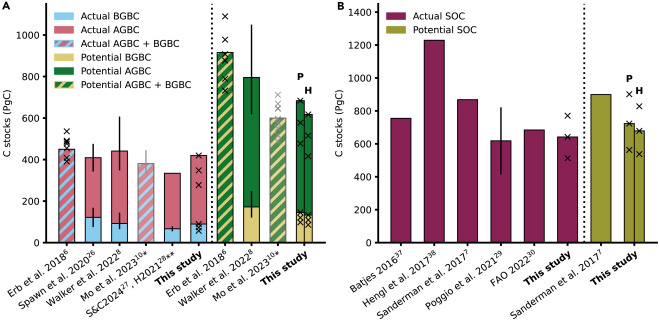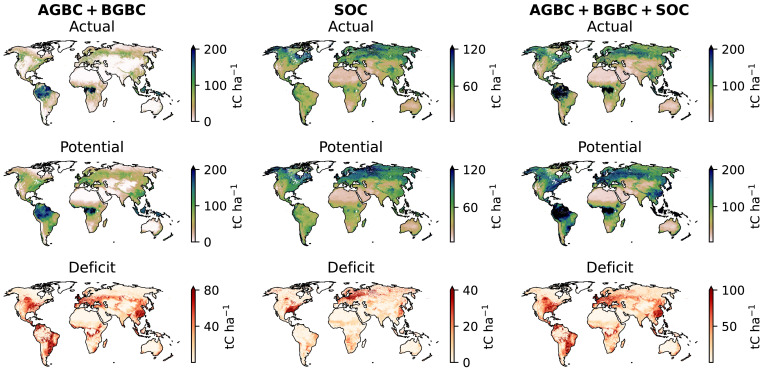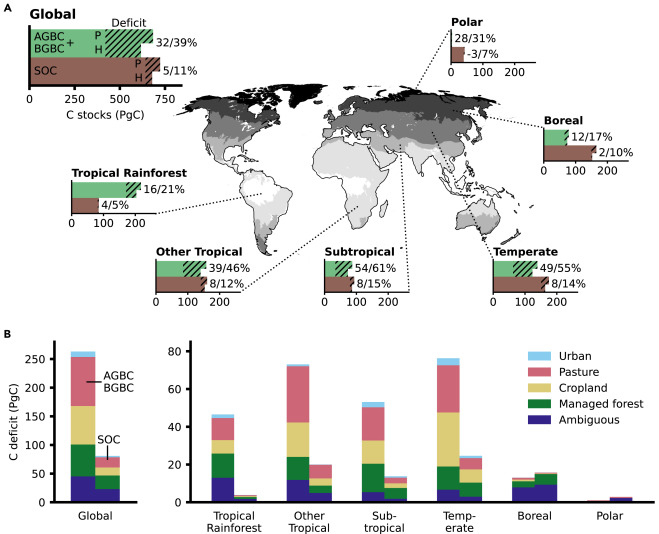文献阅读 250907-Humans have depleted global terrestrial carbon stocks by a quarter
Humans have depleted global terrestrial carbon stocks by a quarter
来自 <https://www.cell.com/one-earth/fulltext/S2590-3322(25)00218-0>
## Intro:
- Vegetation and soils are integral components of the global carbon cycle, storing more carbon than is contained in the atmosphere and all fossil fuel reserves combined.
- Anthropogenic influence on vegetation and soils—and on terrestrial ecosystems in general—began more than 10,000 years ago with the use of fire, the extinction of megafauna, and agricultural practices and accelerated exponentially in the last centuries alongside an increase in global population and economic activities.
- LULCC 的碳损失量化为植被和土壤的实际碳储量和潜在碳储量之间的差异
- 基于过程的动态全球植被模型 (DGVM) 也适用于确定陆地碳赤字,因为它们捕获了相关过程以模拟大气-生物圈互连和人为干扰。
- 然而,流程复杂性和土地和土地管理实践实施程度的差异导致现有 DGVM 的估计存在巨大不一致。这些不一致在模拟植被碳的巨大模型间分布中尤为明显或来自 LULCC 的碳通量,将 DGVM 的模拟与观测数据进行比较时
- 本研究利用高分辨率碳储量数据来量化全球陆地碳赤字,确定主要驱动因素,并调查与 DGVM 可比估计的差异。整合了地上和地下生物质碳(分别为AGBC和BGBC)的半经验碳储量数据,表土层SOC使用机器学习模型以大约 1 公里的空间分辨率预测潜在的碳密度,并随后预测陆地碳赤字(30角秒)。
- AGBC、BGBC 和 SOC 的潜在密度是根据人类影响程度的两个不同假设分别估计的:(1) 假定的原始生态系统,缺乏任何直接人为干扰的证据(以下简称“原始土地假设”)和 (2) 受保护的生态系统,仅表现出较低的人为影响(“低人类影响假设”)。
## Results:
实际碳储量



